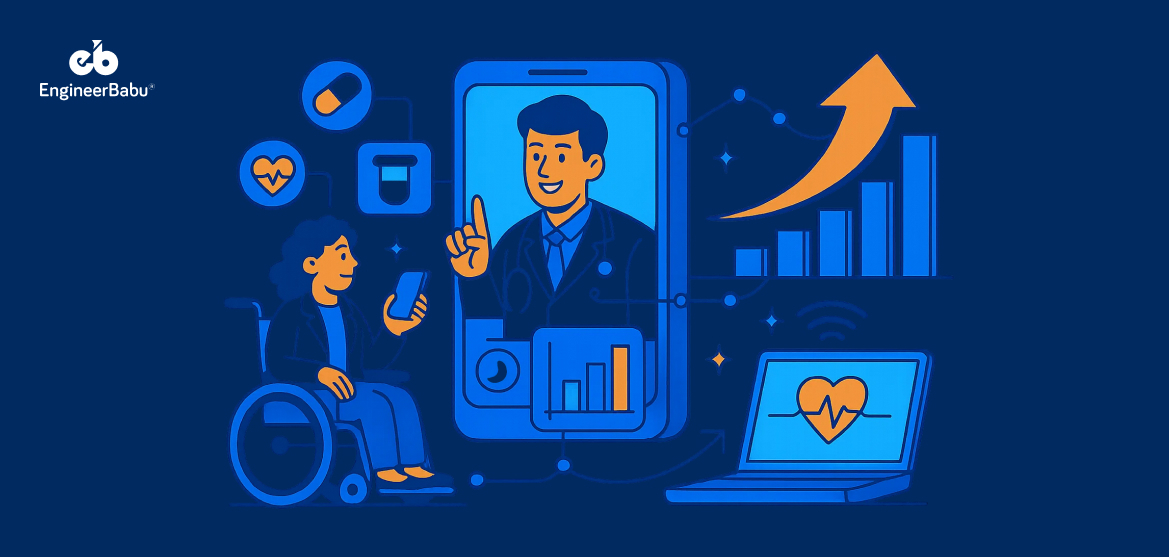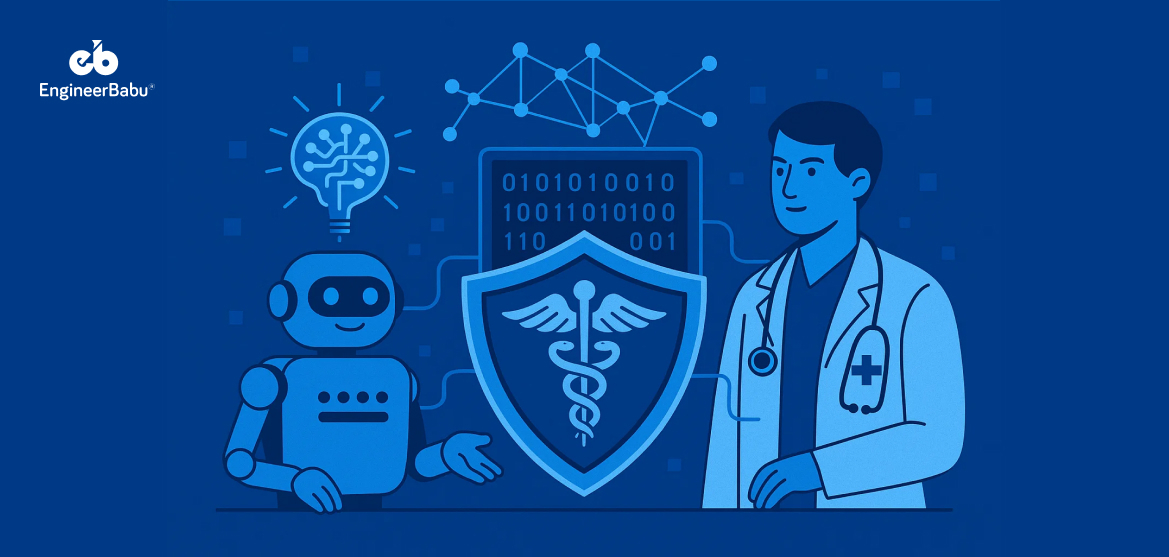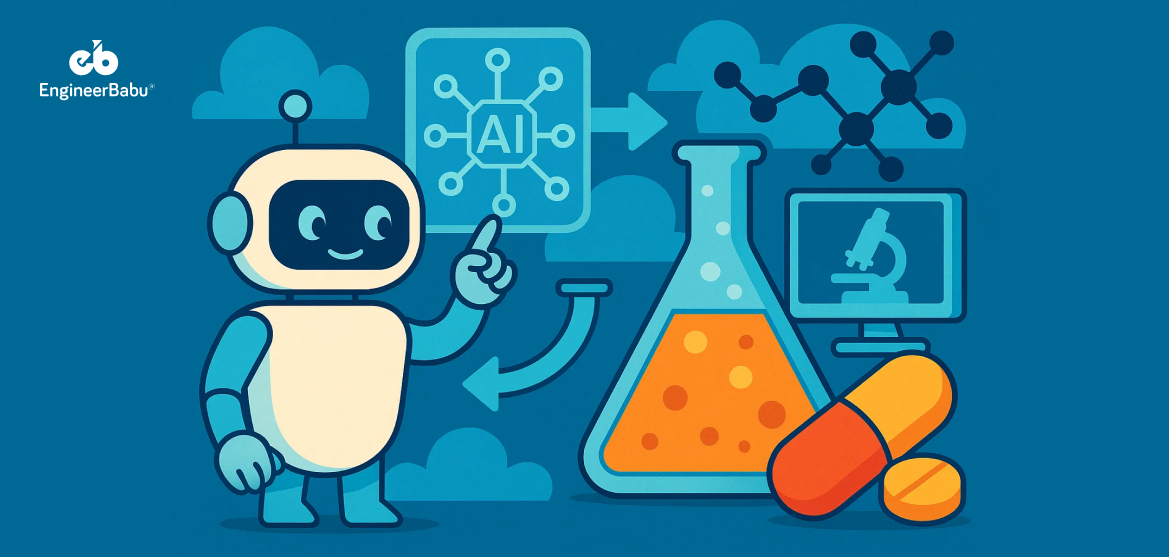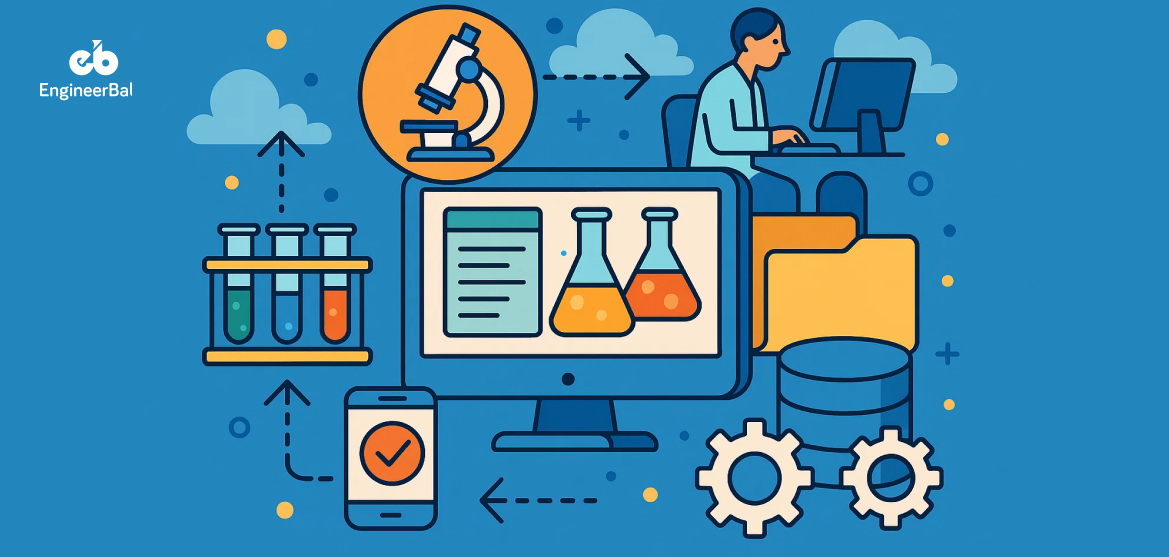Most telemedicine apps look the same on the surface – video consults, appointment slots, digital prescriptions. But under the hood, the real differentiators are getting harder to ignore.
One startup is using LLMs to generate post-visit summaries. Another is layering AI on top of wearable data to predict diabetic complications. A third has cracked real-time language translation for rural consultations in India. These aren’t wishlist features. They’re already shaping investor decks, patient expectations, and provider workflows.
If you’re building in this space, “telemedicine” is no longer just about digitizing doctor visits. It’s about designing clinical-grade experiences, solving for trust at scale, and meeting infrastructure where it is.
This blog lists the top trends that are materially changing how telemedicine apps are being built and what your roadmap needs to respond to.
Top Telemedicine App Development Trends
1. AI & Generative AI Are Reshaping the Backend
Nowadays, leading telemedicine apps are being built around AI. LLMs are being trained on de-identified clinical transcripts to generate case notes that actually match physician language. Triage bots don’t just ask symptom checklists anymore, they infer urgency, flag comorbid risks, and route cases dynamically based on provider availability and specialization.
Generative AI is also being used behind the scenes to create synthetic datasets for training diagnostic models, especially valuable when access to real patient data is limited due to compliance hurdles. And for multilingual markets, AI-driven translation tools are now being fine-tuned for medical vocabulary and cultural nuance, not just generic phrase swapping.
These aren’t add-ons. For fast-moving healthtech brands, AI is increasingly the system layer: powering workflows, shaping UX, and reducing clinical overhead. But what separates serious builders from surface-level adopters is how well they integrate AI into regulated, measurable care flows without compromising safety or trust.
2. Remote Patient Monitoring Is Moving from Devices to Decisions
Modern RPM systems now analyze trends, flag abnormalities, and trigger real-time responses. A sudden drop in oxygen levels can auto-alert a care team. Elevated blood pressure gets linked to medication history and lifestyle patterns.
Consumer-grade devices are also getting smarter. Apple Watch and Fitbit data are being funneled into clinical platforms with proper compliance layers. This removes the need for custom hardware and speeds up patient onboarding.
In low-resource settings, edge computing is gaining traction. Devices process data locally and send only key metrics to the cloud. This improves performance and reduces network dependency.
The real value isn’t in the data itself. It’s in how quickly and intelligently that data drives action.
3. Blockchain Is Quietly Solving the Trust Problem
Security isn’t just a compliance checkbox anymore. For telemedicine apps handling sensitive health data, it’s a core product feature. And that’s where blockchain is starting to prove useful.
We’re not talking about crypto integrations. This is about using distributed ledgers to create audit trails, ensure data integrity, and give patients more control over who accesses their records. Every interaction, whether it’s a prescription update or a lab result, gets time-stamped and stored immutably.
Some brands are using blockchain to enable granular consent. A patient can allow their cardiologist to view ECG data for a limited time, while keeping the rest of their records private. Others are exploring token-based access, where healthcare providers “unlock” data on demand with full traceability.
The benefit isn’t just technical. In regions where patients don’t fully trust digital systems, blockchain-backed transparency can drive adoption. It shifts the default assumption from “my data might be misused” to “I can see exactly how my data is handled.”
Blockchain isn’t a silver bullet. But when it’s implemented with clear use cases, it becomes a practical tool for solving one of telemedicine’s biggest barriers, trust.
4. AR and VR Are Creating New Use Cases in Care Delivery
Augmented and virtual reality are no longer limited to surgical simulators or med school labs. They’re starting to show real utility inside telemedicine platforms.
In physical therapy, VR is being used to guide patients through recovery exercises at home. Instead of a video call with vague instructions, patients wear a headset and follow personalized, interactive routines. Their movements are tracked, assessed, and adjusted in real time.
AR is showing up in patient consultations. For example, dermatologists can overlay visual guides to explain treatment plans, helping patients understand procedures and outcomes with more clarity. In training scenarios, new doctors are using AR-assisted simulations to practice bedside communication and clinical decision-making in remote settings.
For brands building in niche specialties like rehab, psychiatry, or remote diagnostics, AR and VR offer a way to elevate patient engagement and provider accuracy. The key is to go beyond novelty and focus on solving practical problems where traditional video or voice just doesn’t deliver enough.
5. UX Is Finally Being Treated Like Clinical Infrastructure
For years, telemedicine apps treated design as an afterthought. Today, that mindset creates real risk.
Healthcare workflows are layered. A patient might start with symptom input, move to video consultation, complete diagnostics, and then receive follow-up care. If any of those steps feel confusing or disconnected, users drop off or misinterpret key instructions. That isn’t just bad design. It affects clinical outcomes.
Healthtech brands are now designing around real-world behaviors. Intake forms adjust dynamically based on visit type. Navigation is stripped to essentials, reducing decision fatigue. For clinicians, interfaces prioritize data by urgency rather than quantity, cutting down cognitive load during high-volume hours.
Personalization is becoming more contextual. An elderly patient with limited tech experience sees simplified layouts. A long-term user managing multiple conditions gets quicker access to historical data, lab results, and care plans.
This shift in UX thinking leads to measurable gains. Completion rates go up. Missteps in the patient journey go down. Clinical teams operate more efficiently because the software supports their workflow instead of complicating it.
6. Mental Health and Telepsychiatry Are Driving Platform Differentiation
A growing number of telemedicine brands are placing mental health at the center of their product strategy. Not as an add-on or separate product, but as a core part of integrated care.
Telepsychiatry has evolved quickly. Platforms are moving beyond basic video therapy sessions to offer structured care plans, mood tracking, medication management, and real-time crisis support. These are clinical-grade workflows designed to fit into psychiatrist schedules and EHR systems.
Brands that specialize in mental health are also making smart product decisions around accessibility. That includes asynchronous messaging for users with social anxiety, audio-only sessions where bandwidth is low, and culturally adapted care models for multilingual regions.
What’s setting the best platforms apart is how well they balance scale with empathy. Automating intake and screening is helpful, but only if it leads to faster, better-matched care. Offering 24/7 support only matters if the quality holds up. For founders building in this space, the challenge is clear: design for trust, not just throughput.
7. Compliance Is Getting Baked into the Build Process
Regulatory requirements are no longer something you check at the end. They’re shaping architecture from day one.
Brands building telemedicine apps in 2025 are thinking about HIPAA, GDPR, and region-specific laws before they write their first line of code. This shift is driven by more than just fear of fines. It’s about credibility. Healthcare providers and enterprise clients now expect clear answers on how data is stored, who can access it, and how long it lives.
Teams are embedding compliance into infrastructure. That includes automated audit logs, role-based access control, and consent workflows that actually reflect patient expectations. Encryption is a baseline, but more teams are going further. For example, most apps are segmenting data environments, separating PHI from engagement data, and preparing for audits before they’re asked.
International expansion adds another layer. What’s compliant in the US might not pass in the EU, India, or the Middle East. Smart founders are building flexible frameworks that adapt, rather than rebuilding from scratch for every geography.
Compliance used to be a blocker that slowed things down. Now it’s becoming a selling point, especially in enterprise sales where trust is the first hurdle.
8. EHR Integration Is a Make-or-Break Feature
Healthcare providers don’t want another silo. They want systems that plug into their existing records, not work around them. That’s why brands are prioritizing EHR integrations early in the build. Whether it’s Epic, Cerner, or regional systems, the goal is to make clinical data flow both ways, without friction.
Some teams are using FHIR standards to streamline this process. Others are building custom middleware to handle complex cases where APIs are limited or inconsistent. The goal is not just to pull records into the app. It’s to keep patient context intact so clinicians can make decisions faster and with full visibility.
For providers, this reduces duplication and keeps documentation consistent. For patients, it means they don’t have to repeat their history at every touchpoint. For brands, it creates deeper lock-in with enterprise clients who don’t want to manage disconnected workflows.
9. Specialty Care Is Expanding the Definition of Telemedicine
What used to be a space dominated by urgent care and general practitioners is now expanding fast.
Telemedicine is moving into specialties like dermatology, cardiology, endocrinology, and even oncology. These aren’t light-touch use cases. They require diagnostic precision, long-term treatment coordination, and collaboration between multiple providers. Brands entering these spaces are rethinking what virtual care can support.
Some are using image capture and AI in dermatology to handle asynchronous cases. Others are enabling cardiologists to monitor patients using wearables and remote diagnostics, backed by regular consults and medication tracking. Mental health is also branching out, with subspecialties like addiction care and trauma support seeing tailored platforms emerge.
This shift forces teams to go deeper, not broader. It’s not about building one app for everything. It’s about building the right tools for the workflows that matter in each specialty. That focus is what separates useful platforms from ones that try to do too much and end up doing nothing well.
10. Global Access Is Becoming a Core Design Requirement
Telemedicine can’t just serve urban centers with fast internet and private insurance.
Founders are accounting for a much wider range of contexts. That includes multilingual support, offline functionality, local compliance rules, and even UI designs that work on low-end Android devices. The healthcare needs are global, and the tech has to reflect that.
Some platforms are building for regions with spotty connectivity, using SMS-based follow-ups or low-data video protocols. Others are training providers who can serve hyperlocal communities in their own language and cultural context. In many cases, this isn’t just a growth strategy. It’s a requirement for solving real access gaps.
Designing for global accessibility is not about scaling later. It’s about launching with reach in mind. The more inclusive the product, the more resilient it becomes in the face of changing markets, regulations, and patient expectations.
Wrapping Up
Telemedicine isn’t just evolving. It’s fragmenting, specializing, and growing up fast. What used to be a simple video call is now a complex ecosystem of diagnostics, workflows, and care delivery, all packed into an app that needs to be fast, compliant, and clinically sound.
For healthtech brands, this means one thing: the bar is higher. Plug-and-play features aren’t enough. Whether you’re building for chronic care, mental health, or global access, the value lies in the details. How your app integrates with EHRs, how it handles consent, how it scales across borders, that’s what defines whether it gets used, funded, and trusted.
The good news? There’s never been more room to innovate. The problems are real, the use cases are urgent, and the appetite for better digital care is only growing. If you’re building in this space, now’s the time to move beyond the basics and build for the future of healthcare.
FAQs
1. What’s the most important feature to prioritize in a new telemedicine app?
It depends on your target use case, but EHR integration and clinical-grade workflows top the list. Patients and providers expect more than video calls, they want seamless access to records, prescriptions, and post-visit follow-ups without switching platforms.
2. How do we ensure compliance with regulations like HIPAA and GDPR from day one?
Start by treating compliance as part of product design, not an afterthought. Build in role-based access, encrypted data storage, consent management, and audit trails. If you’re working across markets, consider a modular approach to adapt to region-specific rules without duplicating infrastructure.
3. Is AI a must-have for telemedicine apps now?
Not every product needs AI, but if you’re scaling or handling clinical decision-making, it can significantly improve efficiency. Use AI for triage, note generation, language translation, or risk detection, just ensure outputs are explainable and clinically validated.
4. How can telemedicine apps support low-connectivity or rural areas effectively?
Design for constraints. Offer audio-only consult options, compress video streams, allow asynchronous check-ins, and consider SMS-based features. The key is to reduce dependency on bandwidth without compromising care quality.
5. What specialties are seeing the most growth in telemedicine right now?
Beyond general medicine, mental health, dermatology, endocrinology, and physical therapy are seeing strong traction. Each requires specific tools, so tailoring your UX and features to the needs of that specialty is critical for adoption and outcomes.




